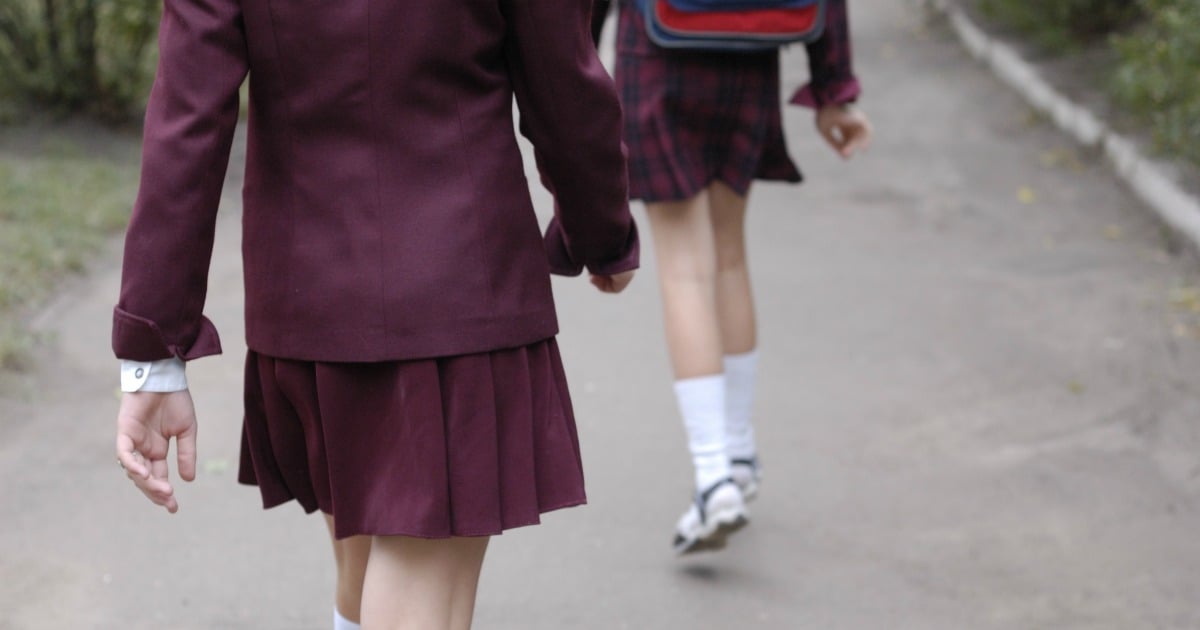John Laws recently demonstrated his commitment to misogynistic and antiquated ideals when he declared that he requires his female employees to wear skirts. Quite rightly, the comment has received a scathing rebuke from women everywhere, who defiantly state that they will not be told by anyone what they MUST wear in the workplace.
Interestingly, Mia Freedman and colleagues on their podcast Mamamia Out Loud, drew the connection between the rights women have at work, and the lack of rights girls have in the schoolyard. Mia noted that it angered her that her daughter was forced to wear a dress to school, with no option of wearing shorts and pants. All commentators asked why no-one appeared concerned with this overt discrimination.
Listen: Mia Freedman, Monique Bowley and Jessie Stephens discuss why our girls are still being forced to wear dresses and skirts to school in 2017 (post continues after audio…)
It is true that in Australia in 2017, some schools offer girls a range of options in their formal uniforms, while a surprisingly large number do not. An analysis I have done of secondary schools in Brisbane found that 67% of public schools, and 100% of private schools did not offer girls the option of shorts and pants.
This means that the majority of high schools in Brisbane REQUIRE girls to wear skirts or dresses, just like John Laws requires his female employees.
What is also true however, is that many women are disturbed by this, and have been fighting their own battles with school administrators for years. In early January, 2017, I published an article in The Conversation asking why do we still make girls wear skirts and dresses to school? The article was read by over 115 000 people, and I was contacted by a range of women across the country who shared their stories of being forced to conform with this requirement.






























































































